-
Posts
2,335 -
Joined
-
Last visited
-
Days Won
12
Content Type
Profiles
Forums
Blogs
Gallery
Events
Store
Posts posted by Bear
-
-
Hello,
I came across a miniature portrait I'm thinking of buying. I need some help identifying the uniform and medals. The date of the portrait is c.1790. Maybe Austrian... I think Austrians wore white uniforms with red cuffs. I don't know

thanks,
barry
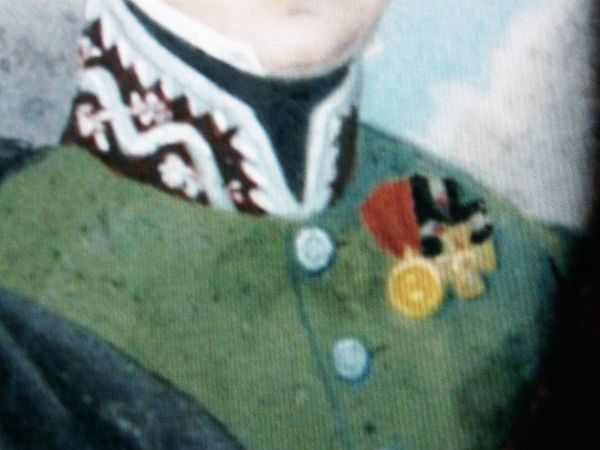 0
0 -
This is a document by General Antoine Morlot(1766-1809)
He would be under Lannes at Saragossa in Spain. He would die of illness soon after the siege.
 1
1 -
General Jean-Marie-Mellon-Roger Valhubert(1764-1805)
He would serve with Marshal Lannes throughtout these battles.
He fought at Montebello, Marengo, and would be killed at Austerlitz.
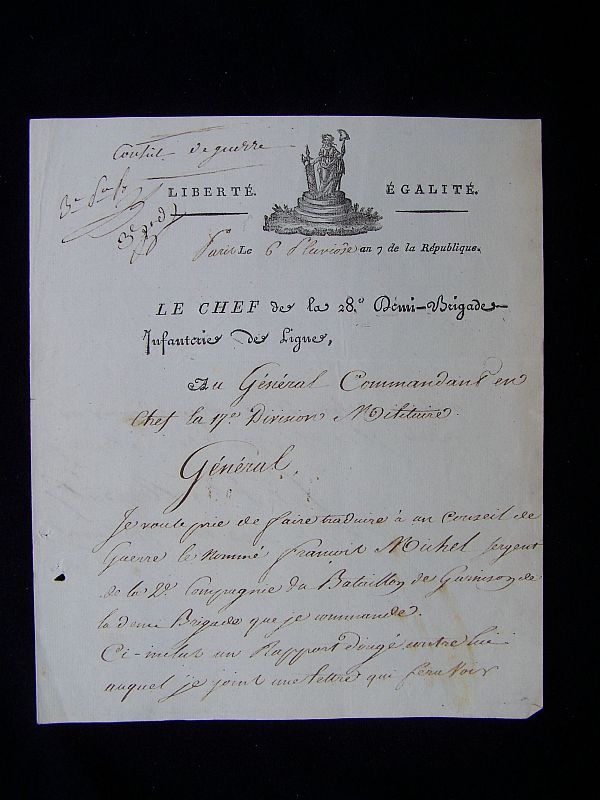 1
1 -
General Antoine-Joseph Veaux(1764-1814)
The General would serve in Egypt. I'm still looking for more info on him.
General Jean-Baptiste Cervoni(1765-1809)
He was one of Marshal Lannes best friends. He lost his head to a cannonball at Eckmuhl.
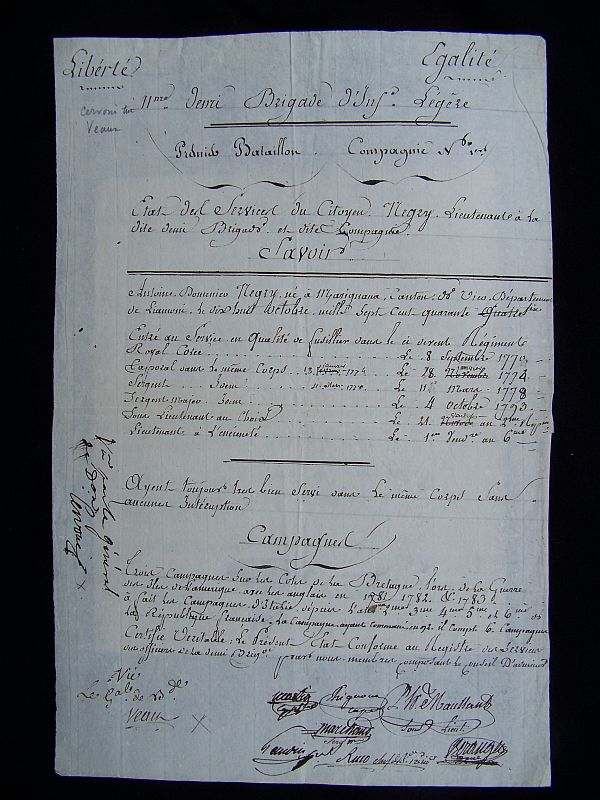 1
1 -
Some new items in today.
General Pierre Decouz(1775-1814)
He was with Marshal Lannes in Egypt and would be killed at Brienne. I'm still lokking for more info on him.
Capitaine sur le champ de bataille des Pyramides, il fut chef de bataillon au si?ge de Saint-Jean-d'Acre.
Lannes en fit son aide-de-camp et lui confia une mission importante pour- le pacha de Syrie qui lui valut le grade d'adjudant-commandant. A son retour d'Egypte, il fut nomm? chef d'?tat-major de la 7e division militaire.
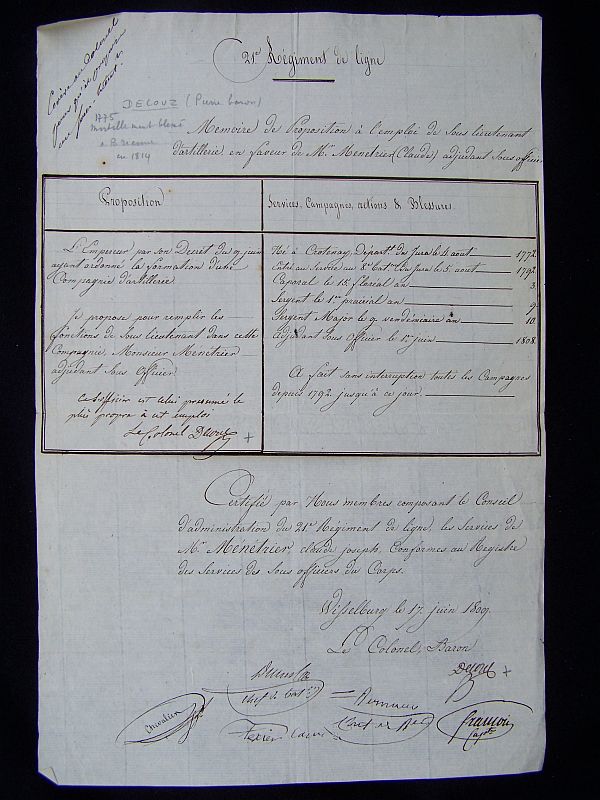 1
1 -
The Duke of MONTEBELLO would allow no capitulation to the town of Saragossa. He only published the following provisions? - ?The garrison shall at noon, on the 21st, lay down their arms at the gate of Portilla, where they shall remain prisoners of war. Those of the troops of the line who are willing to take the oath to King JOSEPH, may be allowed to enter into his service. In case this entrance shall not be permitted by the Minister of War to the King of Spain, they shall be prisoners of war and sent to France. The worship of God shall be reverenced. All the artillery and ammunition of every kind shall be delivered up. All the arms shall be deposited at the doors of the different houses, and collected by the respective Alcaldes.? The magazines of corn, rice and fruit, which have been found in the town are very considerable. The Duke of MONTEBELLO has nominated General LAVAL Governor of Saragossa. A Deputation of the Priesthood and different inhabitants has set out from Madrid. PALAFOX is dangerously ill. He was the object of contempt of the whole hostile army, who accused him of arrogance and meanness. He was never seen where their was any danger. The Count de FUENTES, Grandee of Spain, who had been arrested by the insurgents two months ago on his estate, was found in a dungeon of eight feet square, and released: no idea can be formed of the miseries he had undergone.
Antique print of King Joseph Bonaparte
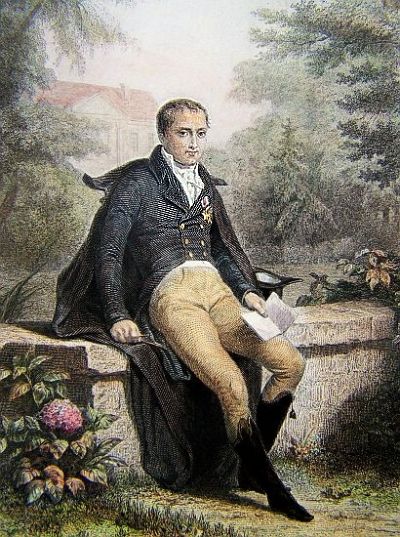 0
0 -
The Church which contained the image of Our Lady of Pillar, which by so many miracles had promised to defend the town, was battered down by bombs, and no longer inhabitable. The Duke of MONTEBELLO deemed it necessary to take possession of the left bank of the river, in order that his fire might reach the middle of the town. The General of Division, GAZAN, made himself master of the bridge by a sudden and impetuous attack, on the morning of the 17th February. A battery of fifty pieces was played off at three o?clock in the afternoon. A battalion of the 28th regiment attacked and took possession of a very large monastery, the walls of which were of brick, and from three to four feet thick. General GAZAN then repaired with rapidity to the bridge, over which the insurgents made their retreat to the town; he killed a vast number, made 4000 thousand prisoners, amongst whom were 2 Generals, 12 Colonels, 19 Lieut. Cols. and 230 Officers. He took 30 pieces of artillery. Nearly all the troops of the line in the town had beset this important part, which had been threatened since the 10th. At the same moment the Duke of ABRANTES entered the Casso through several covered ways, and by means of two small mines, blew up the extensive buildings of the Schaals. After these events, terror was spread throughout the town. The Junta, in order to procure delay, and obtain tome to abate the terror of the inhabitants, sought a parley; but their bad faith was known, and this artifice was useless. Thirty other house were possessed by undermining or by miners. At length, on the 21st of February, the whole town was possessed by our troops; 15,000 infantry and 2000 cavalry laid down their arms at the gate of Portilla, and 40 flags and 150 pieces of cannon were delivered up. The insurgents lost 20,000 men during the siege; 13,000 were found in the hospitals; 500 died daily.
Antique print of Our Lady of Pillar
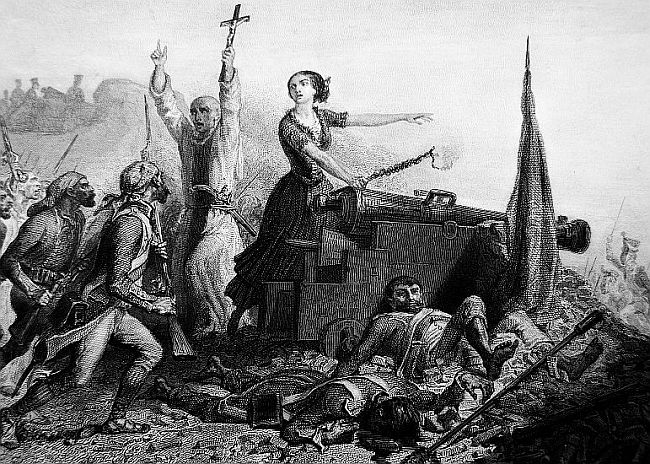 0
0 -
The enemy defended every house; three attacks were made by the mines, and every day several houses were blown up, and afforded the troops an opportunity of stationing themselves in other houses. Thus we proceeded to the Cosso (a great street in Saragossa) where we made ourselves masters of the buildings of the Public School and University. The enemy endeavoured to oppose miners to miners; but less used to this sort of operation, their miners were every day discovered and suffocated. This mode of besieging rendered its progress slow, but sure, and less destructive to the army. While three companies of miners and eight companies of sappers carried on this subterranous war, the consequences of which were so dreadful, the fire on the town was kept up by mortars. Ten days after the attack had begun, the surrender of the town was anticipated. The army had possessed itself of one third of the houses, and fortified itself in them.
Antique Print of Saragossa
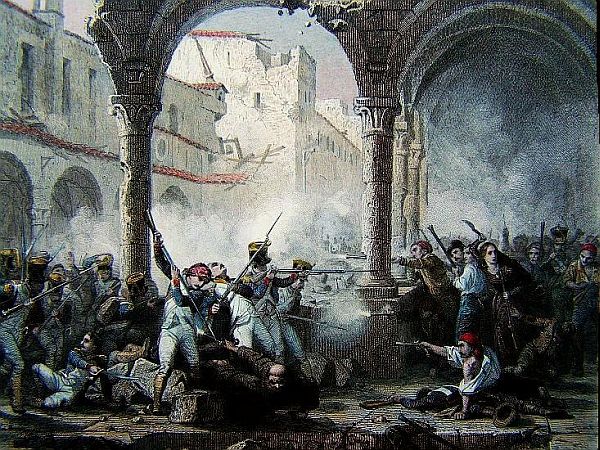 0
0 -
The Chief of Battalion, LEJUNE, Aide-de-Camp to Prince of NEUFCHATEL, distinguished himself, and received two slight wounds. The Chief of Battalion, HAXO, is also slightly wounded, and likewise distinguished himself. On the 30th, the monasteries of the Monique and the Greek Augustines were occupied. Sixty houses were possessed by undermining. The miners on the 14th regiment distinguished themselves. On the 1st of February, General LACOSTE received a ball, and died in the field of Honour. He was a brave and distinguished officer. He has been lamented by the whole army, but more especially by the EMPEROR. Colonel REGNIAT succeeded him in the command of the engineers, and in the management of the siege.
Antique Print of Saragossa
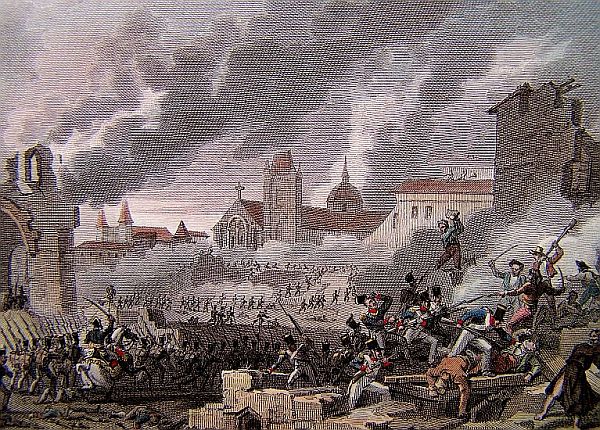 0
0 -
At the same moment the General of Division MORLOT, in an attack upon the left wing, made himself master of the whole fore ground of the enemy?s defence. Captain GUETTEMAR, at the head of the pioneers, and thirty six grenadiers of the Forty Fourth regiment, had, with a rare intrepidity, ascended the breach. M. BABIESKI, an Officer of the Voltigeurs of the Weixel, a young man 17 years of age, and covered with seven wounds, was the first who appeared upon the breach.
This is a document by General Antoine Morlot(1766-1809) while the commandant of the 10e division. He would die of illness soon after the siege.
 0
0 -
Colonel BURTHE, of the 4th regiment of Hussars, and the Chief of Battalion, CAMUS, of the 28th regiment of Light Infantry, distinguished themselves. These operations took place between the 20th and 26th of January. On the 26th the town was seriously attacked, and the batteries were unmasked, and at noon on the 27th the breach was practicable in several places; the troops were lodged in the monastery of San-in-Gracia. The division of GRANDJEAN entered some thirty houses. The Colonel CALOISEKI and the soldiers of the Weixel, distinguished themselves.
This is a document by General Charles-Louis-Dieudonne Grandjean(1768-1828) while with the 10e of cavalry.
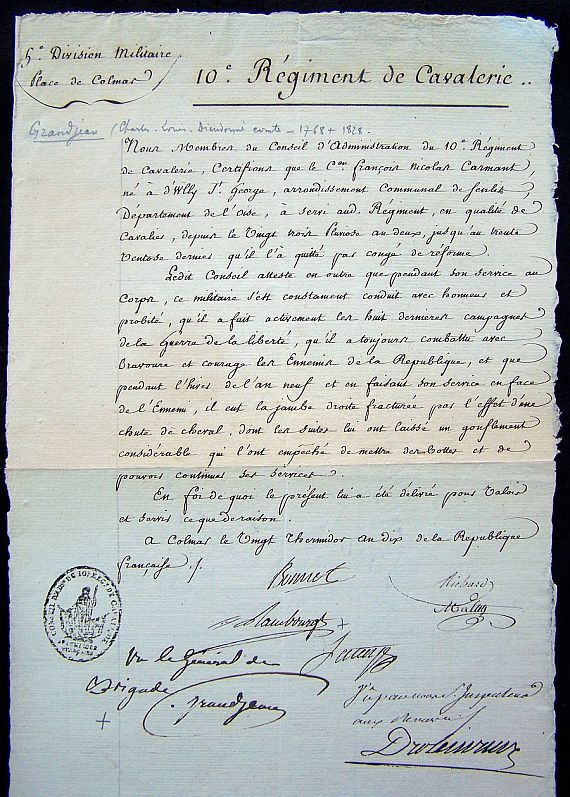 0
0 -
At the same time, the Duke of MONTEBELLO had sent the Adjutant Commandant GUSQUET to Zuera, in order to disperse an assemblage of insurgents; this office attacked 4000 of them with three battalions, overthrew them, and took four pieces of cannon, with their carriages and horses. General VATTIER was at the same time sent with 300 infantry, and 200 cavalry, towards Valencia. He met 5000 insurgents at Alcanitz, compelled them, even in the town, to throw down their arms in their flight; he killed 600 men, and seized magazine, provisions, and arms; among the last were 100 English muskets. The Adjutant Commandant, CARRION NIZOS, conducted himself gloriously at the head of a column of infantry.
This is a miniature portrait/autograph of Marshal Jean Lannes the Duke of Montebello(1769-1809).
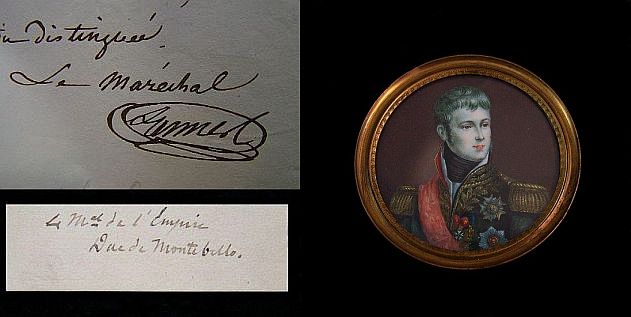 0
0 -
One of the most brutal battles/sieges of the Napoleonic Period was the siege of Saragossa in Spain. This is the French Thirty Third Bulletin of the Army of Spain.
THE THIRTY THIRD BULLETIN OF THE ARMY OF SPAIN
Paris, March 9, 1809
The circumstances of Saragossa was not yet resolved upon; that was considered as inexpedient; and a free communication was still left open, in order that the Insurgents might be informed of the defeat of the English, and their infamous flight out of Spain. It was on the 16th of January that the English were driven into the sea at Corunna and it was on the 26th that the operations before Saragossa were seriously begun. The Duke of MONTEBELLO arrived there on the 20th, in order to assume the command of the siege. As soon as he was assured that the intelligence which was brought into the town had no effect, and that a few monks governed the minds of the people, he resolved to put an end to these indulgences: 50,000 peasants were collected on the left bank of the Ebro: at Pardiguera the Duke of TREVISO attacked them with three regiments; and, notwithstanding the fine position they possessed, the 64th regiment routed them, and threw them into disorder. The 10th regiment of hussars was on the plain to receive them, and a great number remained upon the field of battle. Nine pieces of Cannon and several standards were the trophies of this victory.
This is a document by Marshal Edouard-Aldolphe-Casimir-Joseph Mortier(1768-1835) and it is undated. The document concerns the disciplining of an officer.
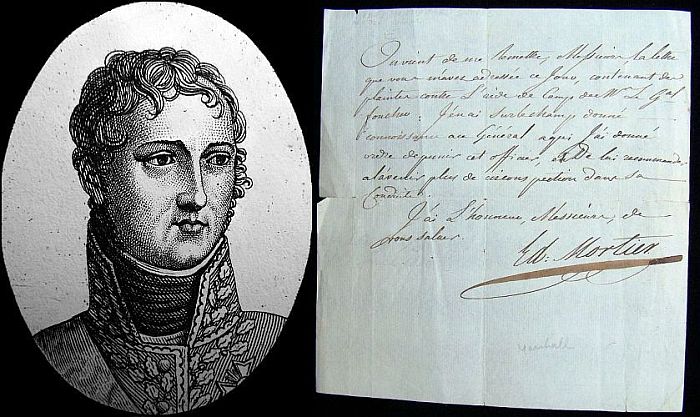 0
0 -
Pay Roll of Capt Abner Priors Company 5th Connecticut Regiment of Foot Commanded by Philip B. Bradley Col. for Jan 7 1780
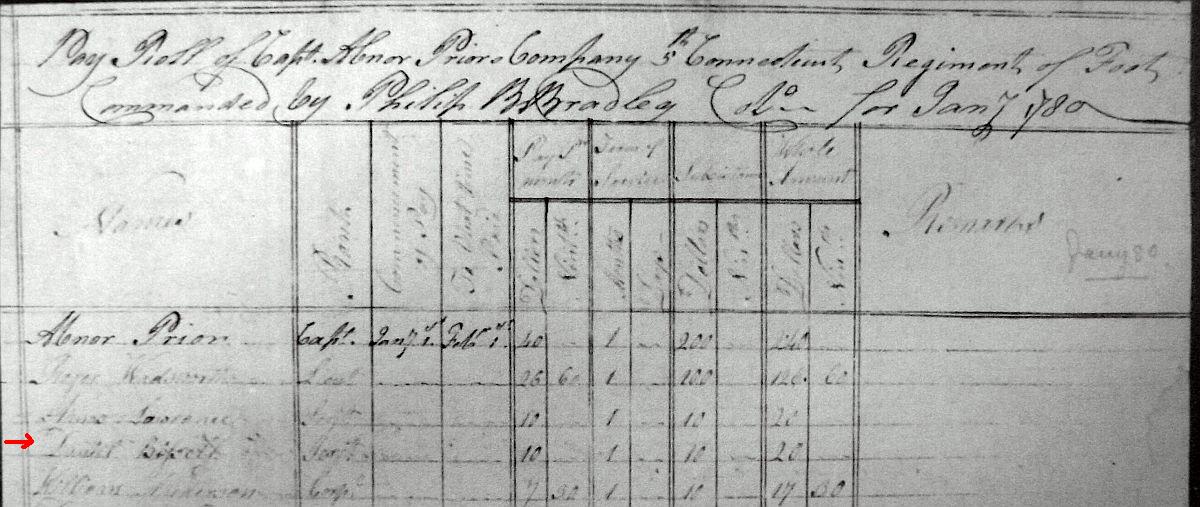 0
0 -
-
middle
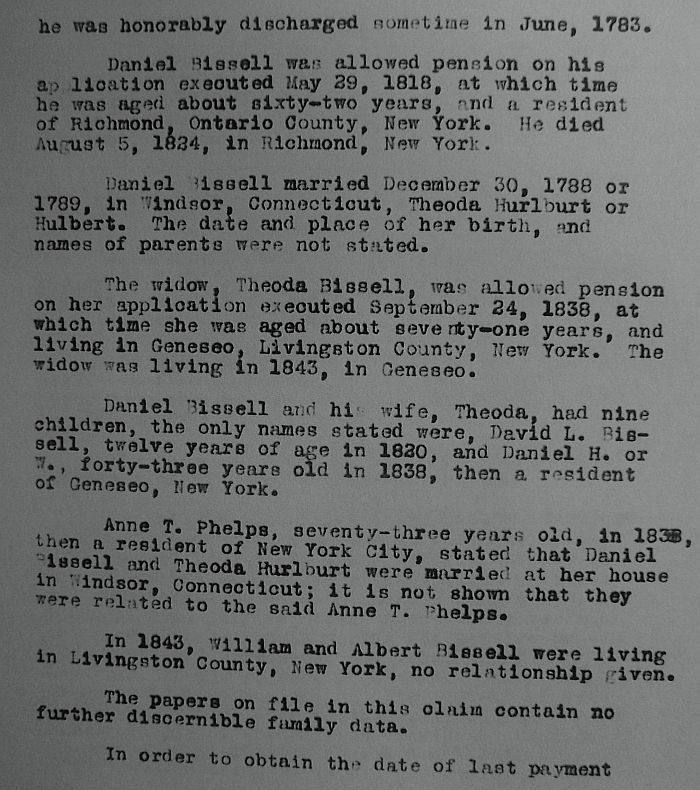 0
0 -
Daniel Bissell was a soldier, spy, and maker of many children.
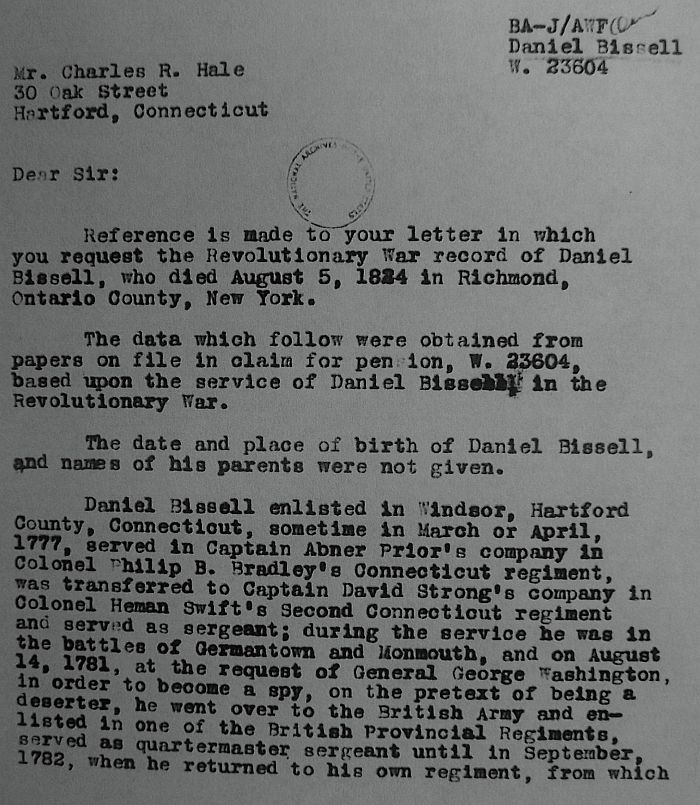 0
0 -
The Libertas Americana medal
On the American victories at Saratoga and Yorktown, 1777 and 1781.
NOT A LIST MEDAL OF THE UNITED STATES MINT
Description
American Liberty--4th of July, 1776.
Reverse
The fearless child was not without the help of gods.
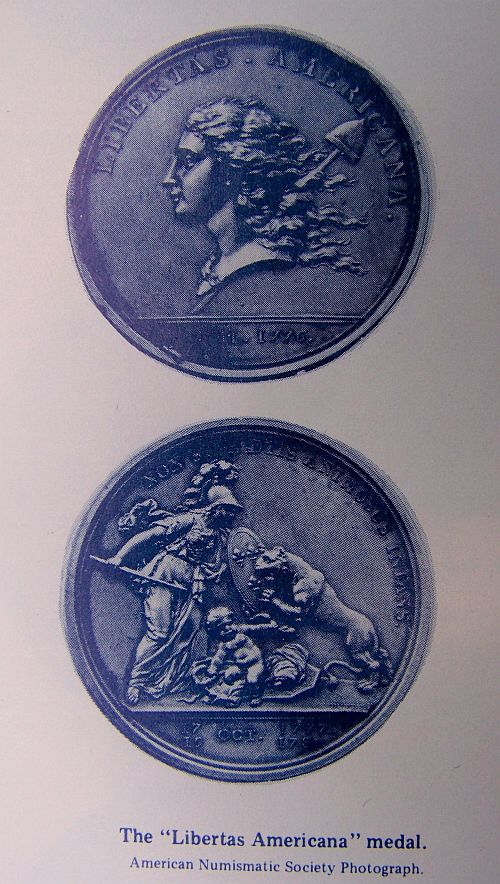 0
0 -
Reverse
Description
Through the determined pursuit of the enemy with a small group of soldiers, he gave a distinguished example of inborn valor in the battle of Cowpens, January 17, 1781.
 0
0 -
This is the last one.....
Medal awarded to Lt Col William A Washington
For the victory at Cowpens 1781
Description
The American Congress to William Washington, Commander of a regiment of Calvary.
 0
0 -
Reverse
Description
The Safety of the Southern Department--The enemy defeated at Eutaw on the 8th of September 1781.
 0
0 -
Medal awarded to Major General Nathanael Greene
For the battle at Eutaw Springs, 1781
Description
The American Congress to Nathaniel Greene, an illustrious commander.
 0
0 -
Reverse
Description
By suddenly attacking the wavering lines of the enemy, he gave a distinguished example of military gallantry in the battle of Cowpens, January 17, 1781.
 0
0 -
Medal awarded to Lt Col Jean Eager Howard
For the victory at Cowpens, 1781
Description
The American Congress to John Eager Howard, Commander of a regiment of Infantry.
 0
0




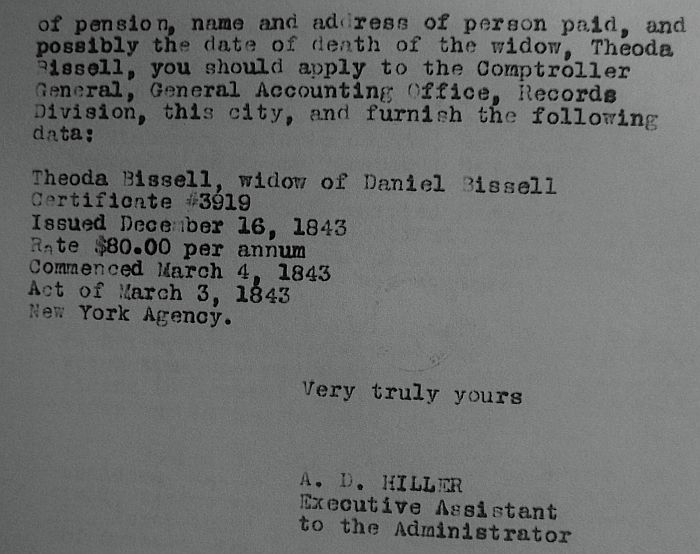
Book - The Spanish Ulcer
in Napoleonic Wars
Posted
This just arrived today. I'm not sure how old it is but it does have some age. Nice little item on Saragossa.
Saragossa, Spain "Our Lady of the Pillar"
40A.D. After Christ's death, ressurection, and ascension, the holy Apostles began to spread the message throughout the land: and eventually into the Roman Empire. St. James the Apostle travelled as far west as to a small village called Saragossa, in Spain. While there, James became disheartened because of the failure of his mission. While James was in deep prayer, the Blessed Virgin Mary appeared to him and gave him a small wooden statue of herself, and a colum of jasper wood. She said:
"This place is to be my house, and this image and column shall be the title and altar of the temple that you shall build. "
About a year later, James arranged for a small chapel to be built in honor of the Virgin Mary. This would be the first church in the entire world to be dedicated to Mary. The jasper column and the wooden statue can still be seen on special occasions at the church that houses them.